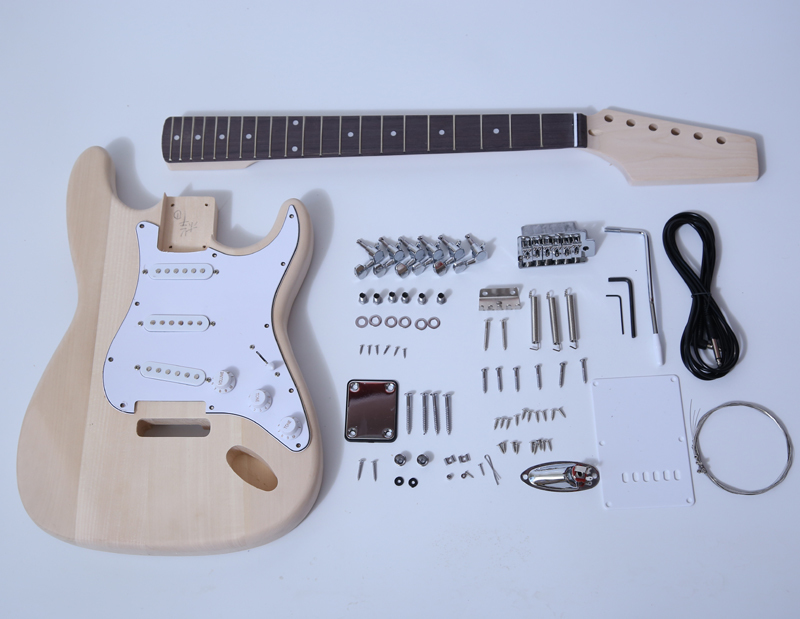There are a number of components that make up the electric guitar and each of them plays an important role in how this instrument produces sound. Whilst some of the parts are the same as the acoustic guitar, there are some parts that make these two instruments very different.
Tuning Pegs: The tuning pegs allow the player to tune the guitar by turning the pegs to increase or decrease the tension in the strings. Some electric guitars have the tuning pegs in a single row on the headstock or in the more classic arrangement found on acoustic guitars.
Truss Rod: The truss rod is found on electric guitars and is used to strengthen the neck and counteract the tension caused by the strings. The truss rod runs through the neck and under the fretboard.
Head: The headstock is located at the top of the guitar and holds the tuning pegs, you will usually find the musical instrument manufacturer logo here.
Nut: The nut is positioned where the neck joins the headstock. The strings pass through grooves in the nut to maintain correct spacing. The nuts used on electric guitars are quite often made from synthetic materials and when a tremolo bar is in use players will often use a locking nut.

Fretboard: The fretboard is a piece of wood attached to the neck of the guitar.
Neck: The neck is the long piece of wood that connects the headstock to the body of the guitar. The fretboard is then attached to the to the neck.
Strings: There are usually six metal strings on an electric guitar, although there are variations found with more or less strings including the one string Unitar.
Frets: The frets of the guitar are found on the fretboard, they are usually made of metal and run perpendicular to the strings. The frets allow the player to change the pitch of the strings. This is done by pressing down behind a fret to change the vibrating length of the string and in turn changing the pitch.
Inlays: Some fretboards feature decorative inlays (markers) at the 3rd, 5th, 7th, 9th, and 12th frets. Inlays may be simple shapes such as dots or more decorative designs, some guitars even use materials such as mother of pearl.
Strap Buttons: The strap buttons on an electric guitar allows the player to attach a strap to their guitar to allow for more comfort whilst playing.
Body: The body of the electric guitar can widely vary in shape depending on the style and maker of the guitar. The different types of electric guitar body include solid-body, chambered body, and full hollow-body. They can also be found in variety of fun shapes!
Pick Guard: The pick guard protect the guitar from scratches and dents at the point of most contact.
Pickups: The pickups of the electric guitar are small magnets wrapped in fine coils of copper wire. When the strings are plucked they pass a small electric current through the magnets. This signal from the magnets is then passed through various components of the guitar to an attached amplifier. There are a number of different types of pickups including humbuckers and optical pickups.
Tremolo Bar: The tremolo bar is a type of vibrato system on an electric guitar. The bar changes the tension of the strings which as a result adds vibrato to the sound. The tremolo bar is also known as the whammy bar, the vibrato bar, and the vibrato arm.
Pickup Selector Switch: The pickup selector switch on an electric guitar allows the player to select which pickup to use.
Tone and Volume Controls: The tone and volume controls, also know as the pots, allow the player to control the volume and tone of the guitar.
Bridge: The bridge, which is located on the lower bout of the guitar, allows the strings to be held at a relative height to the fretboard. The bridges on electric guitars may also be adjusted using the screws.
Output Jack: The output jack allows the electric guitar to be connected to an amp.

